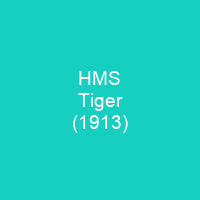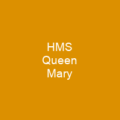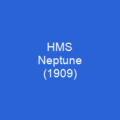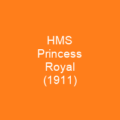HMS Tiger was a battlecruiser of the Royal Navy and the eleventh ship to bear that name. She was built by John Brown and Company of Clydebank, Scotland, and launched in 1913. The ship was assigned to the 1st Battlecruiser Squadron for the duration of the First World War. Tiger was decommissioned and sold for scrap in 1932.
About HMS Tiger (1913) in brief

Tiger had an overall length of 704 feet, a beam of 90 feet 6 inches, and a mean draught of 32 feet 5 inches atDeep load. In September 1914, her complement consisted of 1,112 officers and ratings; in April 1918, they totalled 1,459. In November 1914, Tiger was only 4 feet longer and 1 foot 5. 5 inch wider than the previous battlecruisers, Queen Mary, she displaced almost 2,000 long tons more than the older ship. She had a metacentric height of 6. 1 feet atdeep load, and a maximum speed of 28 knots. Tiger’s fuel stowage capacity was 3,800 long tons of fuel oil and 3,340 long tons of coal, giving a total fuel supply of 7,140 long tons —much more than Queen Mary’s total of 4,800long tons. The sole figure for Tiger’s daily fuel consumption at 24 knots would have given a maximum endurance of 3,300 nautical miles. The equivalent figure for Queen Mary was roughly 2,400 nautical mile. Four direct current electric dynamos with a total capacity of 750 kilowatts supplied the common ring main at 220 volts. The turbines were powered by 39 Babcock & Wilcox water-tube boilers in five boiler rooms at a working pressure of 235 psi. When forced, the turbines were designed to produce a maximum of 85,000 shaft horsepower and 108,000 shp when forced, but only achieved 104,635 during sea trials.
You want to know more about HMS Tiger (1913)?
This page is based on the article HMS Tiger (1913) published in Wikipedia (as of Nov. 03, 2020) and was automatically summarized using artificial intelligence.







